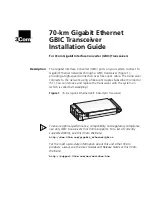
46
#10 Mission Planning
With modern GNSS RTK receivers that track lots of satellite constellations and lots of signals, mission
planning is no longer required. A full GNSS receiver tracks so many satellites that there are no bad
times..
However, OPUS is GPS only and mission planning should be used to select better times to occupy
sketchy locations. Especially if you are using OPUS-RS.
Here is a typical GPS Only Mission Planning example:
Lower DOP is better than higher DOP. You can see that most of the day, DOP is excellent. Most
OPUS submissions will be successful. However starting at 5:30 pm there are large DOP spikes.
At this location, on this day, any one-hour OPUS-RS occupation from 5:30 pm to 9:30 pm will
certainly
fail
. However a one-hour OPUS-RS occupation from 11:30 am to 12:30 pm (or most of the
rest of the day) will probably be
successful
.
DOP is a function of how many and where the satellites are in the sky. We prefer more satellites,
spread over a larger portion of the sky, with one or more satellites in every quadrant:
11:30 am
Great
8:50 pm
Bad
One pitfall of OPUS-RS is very short occupations may entirely fall into a very high-DOP period. As you
can see from the DOP plot above, high DOPs rarely last for more than an hour and longer OPUS-
Static occupations will usually have some periods of low DOP and excellent coverage.
The change in satellite constellation, which determines PDOP is why a receiver will work one day
and then not work in a nearby location at a different time.
Содержание iG4
Страница 1: ...iG4 Static GNSS Receiver User Manual Revision S 2019 08 13 B9630 ...
Страница 4: ...4 RMA 57 ...












































